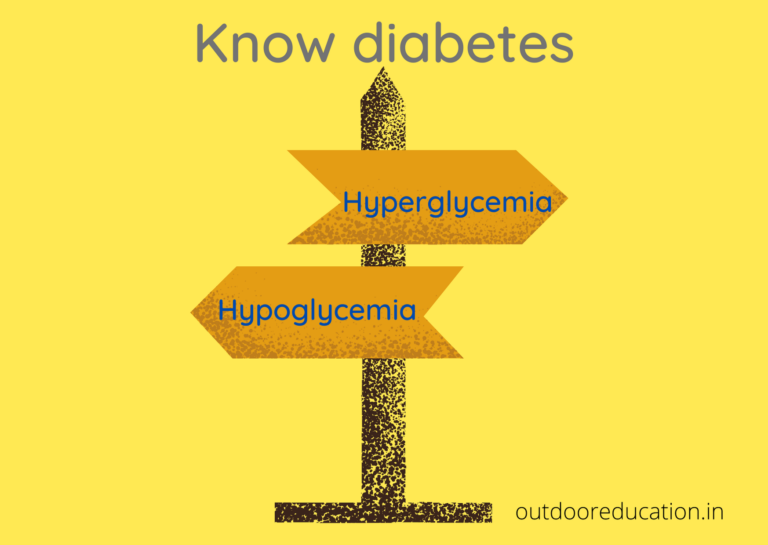Outdoor Leadership & Wilderness Medicine
Know diabetes
Worldwide, diabetes is the leading cause of deaths. Patients with Diabetes Mellitus are susceptible to further complications. These complications can range from delayed wound healing to organ failure.
A chronic disease that occurs when the pancreas can not produce sufficient amounts of insulin or when the insulin produced cannot be effectively used. Commonly there are two types of emergencies Hyperglycemia and Hypoglycemia. Our body is equipped to maintain a normal blood glucose level of 80-120 mg/dl. Imbalance of blood glucose levels can effect normal body functioning and can lead to more complications. On the other hand Hypoglycemia is a life threatening situation and may lead to death. This needs immediate intervention.

Hyperglycemia
This is a medical condition in which the BGL increases over the normal range. There are two conditions that may result: diabetic ketoacidosis (DKA) and hyperglycemic hyperosmolar nonketotic syndrome (HHNS).
DKA occurs when in the absence of insulin, cells start to consume fats available in the body. While consuming fats, the body begins to produce acid.
Excessive glucose begins to spill over and is expelled via urine. This is another reason hyperglycemic patients are often thirsty and regularly need to urinate.
HHNS mostly affects elderly people. Very similar to DKA, HHNS is a hyperglycemic complication in which the glucose level rises to 600-1200 mg/dL. The absence of insulin in the blood causes excess glucose to spill and be expelled through urine. The patient needs to frequently urinate which leads to severe dehydration. It is more common in patients with type 2 diabetes.
Signs and symptoms:
- Elevated Heart and Respiration Rate
- Dehydration
- Thirst
- Frequent urination
- Altered mental status
- Dry, warm skin
- Weakness
- Dizziness
- Nausea and vomiting
Hypoglycemia
Hypoglycemia occurs when the amount of blood glucose level (BGL) falls below a normal range. BGL lower than 60 mg/dL can cause severe damage to the brain. Altered mental status is a very common sign and can be life threatening.
Patients with type 1 diabetes are at higher risk of being hypoglycemic. Even when they take their insulin regularly, reasons like not eating a meal, taking insulin and proper meals but significantly changing their physical exercise or taking too much insulin are a few reasons why they can quickly spiral into a dangerous situation.
Similarly type 2 patients may also experience hypoglycemia. Oral medications can cause a drop in BGL leading to hypoglycemia. If not monitored hypoglycemia can recur and lead to complications.
Other signs and symptoms of hypoglycemia are:
- Confusion
- Drowsiness
- Weakness
- Hunger
- Elevated Heart & Respiration Rate
- Pale Cool Clammy skin
- Unresponsiveness
- Seizure (may occur)
- Stroke (may occur)
Author–
Amit Arora, Outdoor Leadership & Wilderness Medicine Educator.
Reach out at outdooreducation.in@gmail.com to inquire about Wilderness Medicine & Outdoor Leadership training at your organisation.
Connect with us on social platforms.
Disclaimer
“This article is intended to give a general overview of the topic. We do our due diligence to research up to date and accurate information, however the content on this site should never be used as a substitute for personal professional training or direct medical advice from your doctor. Outdooreducation.in assumes no responsibility or liability for the use of information on our website.